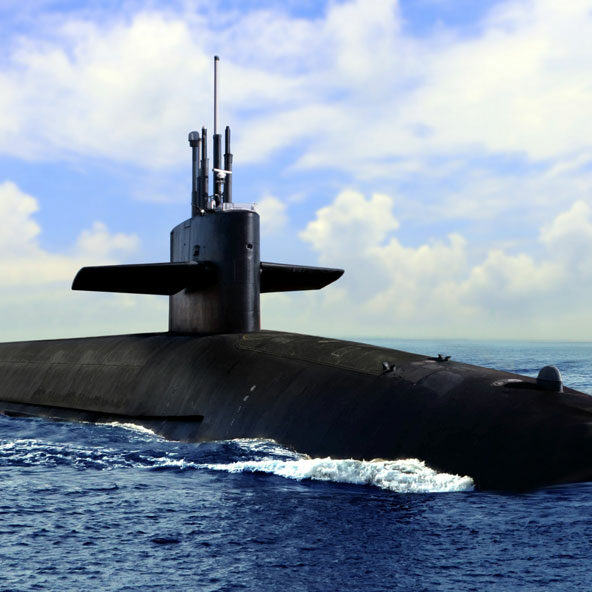Engineering solves difficult problems.
CASE STUDY: When the wrong process introduces a critical vulnerability
Problem: Frequent and unexpected failures of a rubber seal threatened critical water cooling processes in naval nuclear applications. Our client, a major valve manufacturer and supplier, was in danger of losing an important contract, imperiling future work as well. Unable to diagnose and correct the problem on their own, they contacted Manville Rubber.
Solution: After a careful assessment of the operating environment and existing seal, our team of experts quickly identified a splice joint as the culprit. Extruding and splicing is a common production method for very large seals, but this method introduced a vulnerability that was unacceptable in this application.
The raw material had been rigorously tested and qualified by the end user, so material modification was impossible. Even though the material had been designed for an extrusion process, we proposed a fully molded seal to be run on our state-of-the-art 800 ton compression vacuum presses.
While tooling was being fabricated, our team began running trials using the Navy-specified material. We optimized the manufacturing process and shipped prototypes ahead of schedule. Ultimately, our customer reports that over 8 years of production, not a single seal has failed. When valves are pulled from service for scheduled refurbishment, the seals could be kept and reused.
With the right team and expertise, even the toughest challenges can be overcome.


CASE STUDY: When offshore fails
Problem: A major supplier of replacement aircraft parts went overseas in search of rock-bottom pricing. At the end of a lengthy development process, they discovered that their overseas rubber manufacturer was unable to provide testing data and materials' certification as required by the FAA. Furthermore, they had become non-responsive when the first shipment of prototypes failed to arrive. The supplier was in danger of missing a major sales opportunity.
Solution: Our customer was unable to retrieve the molds from the offshore supplier. Further, they lacked any information on the rubber formulation used to develop the prototype parts they eventually received. Gathering the information we needed, MRP got to work developing a new elastomer that would meet the exact compression/deflection characteristics required by the FAA. Simultaneously, new tooling was designed and ordered. Soon thereafter, the production line was readied and the first prototypes produced. Testing was carried out by an independent lab, and within three test iterations the product was certified as meeting all of FAA's requirements.
Cost savings from overseas are irrelevent if the supplier can't meet end-user specifications.
CASE STUDY: Success begins with the right compound
Problem: After working on the project for months, a rubber supplier waited until the last minute to reveal that they could not produce the parts. Their process was flawed and they could not fix it. The purchasing manager faced a crisis: they needed very large rubber molded parts...and they needed them quickly.
Solution: During a frantic phone call to MRP, the purchasing manager was reassured that we had the capability to manufacture the very large parts, and that the existing tooling might be salvaged. Upon receiving the mold, we were quickly able to diagnose the problem. Shortly thereafter, we delivered an estimate for modifying the mold, reformulating the compound, and producing prototypes.
While the tooling was being modified, our lab developed a rubber compound that would meet product specifications and cure completely, a requirement that the other supplier was never able to satisfy. As soon as modifications were complete, the mold was put into production and several compounds were tested. The customer had the parts they needed within weeks, a relief after experiencing delay after delay by the other supplier.
By working smart and acting quickly, MRP delivered in weeks what had been delayed by months.

